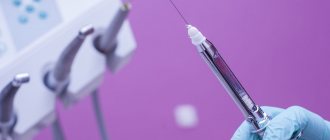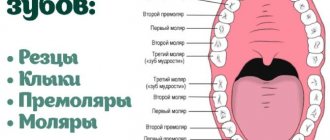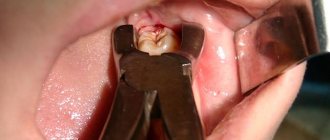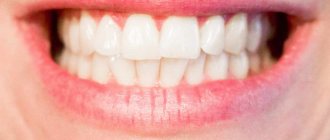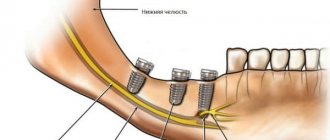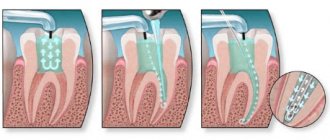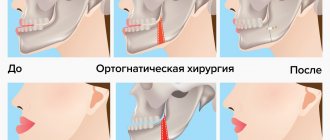Possible reasons
Note that ineffectiveness of the anesthetic drug is extremely rare. Typically the cause is the following factors:
- According to medical statistics, this list is topped by improperly stored injections or expired injections. This situation can often be encountered in little-known dentists.
- Many people know that the presence of alcohol in the blood can affect the effect of painkillers, or rather, provoke their inaction. If a patient came to the dentist for dental treatment while intoxicated or with a hangover, it is not at all surprising that the drug did not work.
- Insufficient experience of the doctor who uses the wrong drug, too low a dosage, too thin a needle, etc.
- Diseases of the mucous membrane accompanied by swelling. Thus, the medication may not reach the nerve endings. Again, this is only possible with low qualifications of the doctor. An experienced specialist knows all the nuances and anatomical features, so such an oversight is excluded.
Types of local anesthesia
Application anesthesia
This method completely eliminates the use of a needle and syringe. A small amount of a special anesthetic (paste, gel or ointment) is applied to the selected area with a cotton swab or fingers, which penetrates 2-3 millimeters into the soft tissue and blocks the nerve endings.
Application anesthesia
Since “freezing” acts for a short period of time (no more than 20 minutes), this method is more often used when performing simple and quick operations where it is necessary to anesthetize only the oral mucosa.
Application anesthesia is often used before the subsequent use of injection, especially if the patient is very afraid of injections, or when treating children.
The drug in aerosol form can also be used as an anesthetic. However, due to the complexity of calculating the required amount of anesthetic substance, this type has not been widely used in dentistry. The use of an aerosol increases the risk of complications, as it can easily penetrate the patient's respiratory tract and bloodstream.
Conduction anesthesia
This type of anesthesia is the most effective method in which the active substance is injected in small doses (no more than 5 milliliters in volume) using a special needle into a place located in close proximity to the nerve that controls the site of the intended intervention.
Conduction anesthesia
With this method, using only one dose of injection, you can achieve “freezing” not only of one tooth, but of a much larger area. To improve the effectiveness of the injected substance, the injection is given at an angle of 90 degrees. 15-20 minutes after the injection, the drug begins to act, and the doctor can begin manipulation.
The main advantage of using conduction anesthesia is the long duration of action of the drug - from one and a half to three hours. During this time, the doctor can work with several molars and adjacent soft tissues, perform a complex tooth extraction, perform surgery for a jaw injury, and much more. The duration of action of the drug can be increased by adding a dose of anesthetic if for some reason the duration of the operation has increased. Due to the fact that complete anesthesia occurs, the patient’s salivation decreases, which greatly simplifies the doctor’s work.
Infiltration anesthesia
In modern dentistry, this is one of the most common types of local anesthesia, in which the drug is administered with a syringe into the gum tissue. With this method, the nerve endings are blocked directly at the site where the anesthetic is injected. Currently, two methods of infiltration anesthesia are used: direct and indirect.
Infiltration anesthesia
Direct anesthesia - the medicine is directly injected under the mucous membrane in the place where dental procedures will be performed and the sensitivity of which needs to be reduced.
Indirect anesthesia - the active substance is injected at a distance of 2 centimeters or more from the site of manipulation, penetrates into the tissue and numbs a larger area.
The advantage of infiltration anesthesia is that after the administration of the anesthetic, in just a couple of minutes the doctor can begin work and the “freezing” effect lasts about an hour. This time is enough to perform implantation surgery, remove a tooth, treat pathological conditions of the gums and teeth, remove various tumors on the oral mucosa and other manipulations.
Depending on the area where the injection is given, infiltration anesthesia is:
- intraosseous (spongy) - the injection is placed directly into the bone between the roots of the teeth. It is most often used in the area of lower molars, during the treatment or extraction of teeth, when conduction and infiltration anesthesia are ineffective. This method allows for high-quality pain relief using a small amount (1-1.5 milliliters) of a weak anesthetic.
- intraligamentary (intraligamentous) - the anesthetic is administered with a special syringe under high pressure not into the nerve itself, but into the gum and jaw tissue, that is, into the periodontal space. Anesthesia occurs within a minute from the time of injection and lasts from 20 to 40 minutes. This is enough to perform outpatient procedures. This method of pain relief is low-traumatic, the drug accumulates to a greater extent in the injection area, so there is no gums during and after the injection.
- intracanal - performed using a drill. First, a hole is made in the tooth that matches the diameter of the needle, and then the anesthetic is injected directly into the pulp or deeper into the canal itself. Intracanal anesthesia is used as an adjunct to intraligamentary anesthesia.
Tuberal anesthesia
Tuberal anesthesia
When using this method, the anesthetic is injected into the tubercles of the upper jaw, which are called tuber in Latin. The posterior alveolar nerve is located in this area, thanks to which most of the alveolar ridge is “frozen”. The tuberal anesthesia method is rarely used, as it is considered dangerous from the point of view of the occurrence of various complications due to the individual structure of the jaw in this area and the location of nerves and blood vessels in it.
Psychological factor
We should also talk about the moral state and psychological state of the patient. People who are very afraid of the dentist are called dentophobes. This category of people comes to the doctor only in advanced cases, when the pain can no longer be endured or it is a purulent process. As soon as the patient crosses the threshold of dentistry, the heart begins to beat faster, the body actively produces adrenaline, as a result of which spasm of the smallest blood vessels occurs. It is for this reason that the anesthetic is ineffective.
To eliminate this factor, dentists recommend starting to take sedatives at night 2-3 days before. A conversation with a doctor, a detailed description of the process, a cozy atmosphere and pleasant music are conducive factors that will help you relax as much as possible.
Why might painkillers not work?
The effect of an anesthetic drug is always individual, and sometimes, even with the calculated dosage, the patient complains that the gums remain sensitive, and he is afraid to begin treatment. It may depend:
- From the specific location of the nerves in the gums and soft tissues;
- From the psychological mood of the patient (yes, the more we are afraid, the worse the drug can act);
- From the release of adrenaline during stress;
- From the body's immunity to a specific substance;
- From alcohol abuse.
Also, immunity to painkillers is possible in case of severe suppuration at the site of anesthesia: a large accumulation of pus blocks the effect of anesthesia.
Important!
At As-Stom dentistry, they always accommodate the patient halfway if he says that he still feels pain. The doctor will administer an additional dose of the drug, or change it in case of immunity, and in case of severe stress, he will offer the patient a sedative, turn on a distracting movie on the screen, and provide a comfortable blanket.
If you are seriously anxious, you may want to ask your dentist directly what anti-anxiety medication you can take before treatment to help reduce your anxiety levels.
Expert advice
So, now let’s look at the unique recommendations of doctors that will help prevent inaction of anesthesia:
- Alcohol should not be taken three days before visiting the doctor. If a trip to a medical facility was not planned, and you drank alcohol the day before, the situation can be resolved with the help of enterosorbents. Even regular activated carbon will do. You need to drink the appropriate dosage for your weight twice with an interval of 1-2 hours.
- If you do not want to take sedatives. Replace them with a soothing tea, mint tea, a warm bath with lavender, etc.
- To normalize your psychological mood, try to think about positive aspects. Good emotions will help you overcome your fear of the dentist and successfully undergo the necessary dental procedures without pain and discomfort.
Anesthesia for pregnant women during dental treatment
During pregnancy and breastfeeding, the patient needs to select an anesthetic drug especially carefully. Many drugs can harm the unborn child, so in the early stages (the first two months), when the fetus is forming, it is better to refrain from visiting the dentist if an operation with anesthesia is to be performed. Also, dental operations are not performed in the last two months of pregnancy.
The optimal time for dental treatment with anesthesia is the second trimester of pregnancy. For treatment, injection anesthesia is chosen, and the injection is given very precisely, with a small amount of the drug.
During lactation, if the mother has to undergo dental treatment with anesthesia, it is recommended to temporarily transfer the child to artificial nutrition until the drug is completely eliminated from the body.
Not available for pregnant women:
- General anesthesia.
In what cases is the patient to blame?
The effectiveness of local anesthesia is reduced by the following situations:
- Advanced purulent inflammatory processes. Due to the increased acidity of the environment, such teeth are very difficult to anaesthetize. Therefore, it is better not to wait until an abscess develops or acute pain occurs, but to consult a doctor at the first symptoms of the disease;
- Alcohol – even a small amount of alcohol taken the day before or on the day of treatment reduces the effect of anesthesia. The tissues become insensitive to pain relief, so drinking for courage before visiting the doctor is not the best option. In a state of acute alcoholic intoxication, teeth cannot be treated at all, and experienced alcohol lovers will not take even the most “cool” painkillers;
- Drugs – the situation is the same as when taking alcohol. And it doesn’t matter what the patient used. Even weed, which “dope lovers” consider harmless, can completely block the effect of anesthetics;
- Painkillers and strong sedatives taken the day before treatment or before a dental visit may reduce the effectiveness of anesthetics;
- Critical days - there is an opinion that during this period the teeth are more seriously anesthetized. Therefore, in the absence of urgent indications, it is better to postpone a visit to the dentist;
- Stress – some patients are terrified of the dentist and set themselves up for the failure of anesthesia. As a result, this is what happens. But as soon as the patient relaxes and calms down, the anesthesia begins to take effect. To prevent this from happening, you need to go to the dentist with a positive attitude, and before seeing the doctor, take a couple of tenoten tablets or herbal sedatives (not alcohol-based).
Stages
The Gödel classification, developed by Arthur Ernest Gödel in 1937, describes four stages of anesthesia. Modern anesthetics and updated methods of drug have improved the speed of onset of anesthesia , overall safety and recovery, but the four stages remain essentially the same:
General anesthesia is similar to a comatose state and different from sleep.
Stage 1 or induction . This phase occurs between the administration of the drug and loss of consciousness. The patient moves from analgesia without amnesia to analgesia with amnesia.
Stage 2, or arousal stage . The period after loss of consciousness, characterized by agitated and delirious activity. Breathing and heart rate become erratic, and nausea, dilated pupils, and holding your breath may occur.
Due to irregular breathing and the risk of vomiting, there is a danger of suffocation. Modern fast-acting drugs are aimed at limiting the time spent on the 2nd stage of anesthesia.
Stage 3 or surgical anesthesia : muscles relax, vomiting stops, breathing is suppressed. Eye movements slow and then stop. The patient is ready for surgery
Stage 4, or overdose : if too much anesthetic has been administered, then depression of the brain stem occurs . This leads to respiratory and cardiovascular collapse.
The anesthesiologist's priority is to get the patient to stage 3 anesthesia as quickly as possible and keep him there throughout the operation.
If there is pain after dental treatment
In this case, complications are to blame:
- hematoma is a tumor that appears at the injection site. If a large vessel is damaged, it may spill. When an infection occurs, suppuration of the hematoma occurs - a serious complication of dental treatment, life-threatening;
- a piece of the needle broke off, remaining inside the jaw tissue. This complication almost never occurs now, since the disposable instrument practically does not break. If this happens, it is possible that the clinic you went to uses a cheap medical instrument. Think about whether it is worth getting treatment in such a place;
- temporary paresis of the facial nerve - the complication goes away on its own without treatment;
- allergic reaction - usually occurs when a new drug is first administered. To avoid getting into such a dangerous situation, tell your doctor about your allergic predisposition.
In most cases, all problems with anesthesia can be easily resolved. To do this, additional injections are given or treatment is postponed to another day.
Category: Tooth extraction Published by Mister stomatolog
How long does dental anesthesia last?
This is another important point. It is important for the patient to know that it will not hurt and to understand how long the dental anesthesia lasts. The last factor can be decisive for planning work functions for the rest of the day. Insensitivity increases the risk of injury to the tongue and mucous membranes, which is why dentists recommend refraining from eating and active speech. In the case of conduction anesthesia, problems with diction and swallowing may occur.
find out how long dental anesthesia lasts in your particular case from your attending physician. He selects 1 drug or combination and selects the dosage. The effectiveness of pain relief will depend on the sum of these criteria.
How many hours does it take for the tooth to be anesthetized depends on the drug and dosage
- Drugs with a short duration of analgesia give an effect for 30-60 minutes. For example, novocaine “works” for up to 1 hour, but in combination with adrenaline, the duration of action is extended to 90 minutes.
- The average duration of anesthesia for infiltration injection with lidocaine is 1.5-2 hours.
- Ultracaine - gives a high effect, lasts up to 5 hours, and Bupivacaine can freeze the injection area for up to 8 hours.
to predict exactly how long anesthesia will last for dental treatment for a particular patient only by taking into account all individual factors. Your doctor can guess the average exposure time, but it may vary.
What is dentistry under anesthesia?
By the word “anesthesia” we are accustomed to understand a complete disconnection from reality, although in fact sedation also refers to anesthesia. When the procedure is performed under anesthesia, the central nervous system (CNS) is depressed, which allows you to “switch off” without feeling fear and pain.
Both sedation and general anesthesia are carried out under the supervision of an anesthesiologist, with constant cardiac monitoring, and have a certain list of contraindications.
Sedation
– another common type of dental anesthesia, but it affects the nervous system and control of the patient’s psycho-emotional state. A person under sedation remains conscious, but is in a state of a kind of half-sleep, relaxed and calm, his sensitivity is dulled, his emotional background increases, and the body does not react to dental operations as if it were severe stress. To immerse him in this state, a sedative is administered intravenously, and additional pain relief is performed with local anesthesia.
Interesting fact:
The first dental operation under general anesthesia was performed in 1846 by dentist T. Morton, and this was, in principle, the first operation under anesthetic. Local anesthesia began to be used in dentistry later, from 1881.
Important!
Dental procedures under general anesthesia are not carried out in all clinics: this requires additional equipment, an anesthesiologist, experience with such anesthetic drugs, and an appropriate license. At As-Stom dentistry, operations under general anesthesia are not performed!
Preoperative assessment
Before undergoing general anesthesia, patients should undergo a preoperative assessment to determine the most appropriate medications, their amount and combination.
Some of the factors that should be examined in the preoperative assessment include:
- body mass index (BMI)
- disease history
- age
- medications taken
- time before anesthesia
- alcohol or drug use
- use of pharmaceuticals
- examination of the oral cavity, teeth and respiratory tract
- cervical spine mobility study
It is important that you answer these questions accurately. For example, if a history of alcohol or drug use is not mentioned, insufficient anesthesia may be given, which could lead to dangerously high blood pressure or unintentional intraoperative awakening.
Anesthesia for children during dental treatment
In pediatric dentistry, the choice of anesthetic depends on the age of the child, the characteristics of his immunity and nervous system. Sedation through a breathing mask is often used - especially at a young age, when it is still difficult to explain to a child that he needs to sit still and endure an injection with a large and scary syringe in the gum. The dosage of the sedative is designed for approximately 10-15 minutes - this time is enough to calm the child and carry out all the necessary manipulations.
General anesthesia is also used in pediatric dentistry, although it is recommended in extreme cases.
In our dentists “As-Stom” for dental treatment for children
Injection anesthesia is carried out, and if the child is afraid of an injection, application anesthesia is first applied. If necessary, to exclude an allergic reaction to an anesthetic drug, a pediatric dentist can give a referral for allergy tests.
Symptoms and causes of numbness after an injection
Numbness of the jaw after anesthesia is considered normal. But if it is accompanied by the following symptoms, you should seek the help of a doctor:
- numbness, burning or tingling of the tongue;
- numbness of the cheek;
- painful sensations in the tooth;
- sagging of the lower parts of the face;
- excessive salivation;
- pulsation in the gum.
Factors that influence the occurrence of symptoms:
- when injecting the anesthetic, the needle entered a blood vessel;
- a nerve was damaged during the injection;
- due to increased toxicity, the anesthetic itself caused numbness.
Risks
In general, general anesthesia is safe. Even very sick patients can be safely anesthetized. The surgical procedure itself involves much greater risk.
Modern general anesthesia is an incredibly safe procedure.
However, older adults and those undergoing lengthy procedures are most at risk for complications . These findings may include postoperative confusion , heart attack, pneumonia, and stroke.
Some specific conditions increase the risk for a patient undergoing general anesthesia, for example:
- obstructive sleep apnea, a condition in which people stop breathing while sleeping
- seizures
- existing heart, kidney or lung disease
- high blood pressure
- alcoholism
- smoking
- previous negative reactions to anesthesia
- medications that may increase bleeding - aspirin, warfarin , for example
- drug allergy
- diabetes
- obesity or overweight
